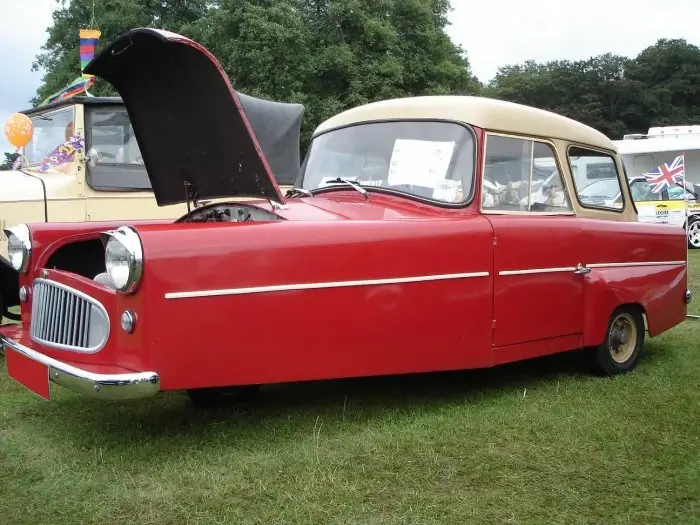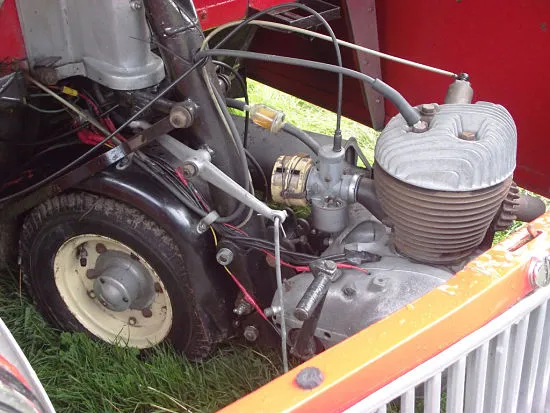Bond Minicar Tyres

1959 Bond Minicar
Bond Minicar 1949–1966
- The Bond Minicar is a favourite of Longstone, with one of the iconic Three-Wheelers belonging to the owner of Longstone Tyres Dougal himself!
- Sadly we don't have the unusual tyre size of 400x10 in stock, but either email info@longstonetyres.co.uk or ring us on 01302 711123 and we can probably source these tyres for you.
Bond Minicar Tyres Explained
History of the Bond Minicar
The minicar's fundamental design was inspired by a prototype made by Lawrence "Lawrie" Bond, a Preston-based engineer. Bond had worked as an aeronautical designer for the Blackburn Aircraft Company during the war before establishing a modest engineering firm in Blackpool that manufactured aircraft and vehicle components for the government. After the war, he relocated his firm to Longridge, where he created a series of small, inventive racing vehicles that had limited success. In the early part of 1948, he showed the press a prototype of what was touted as a new minicar.
It featured a 125 cc Villiers two-stroke engine with a three-speed transmission, a dry weight of 195 pounds, and a cruising speed of roughly 30 miles per hour. Production was "expected to start in three months' time" at the time of the report (May 1948). The prototype was developed at Bond's Longridge headquarters in Berry Lane, where it is now honoured with a blue plaque.

Sharp's Commercials was a firm that the Ministry of Supply hired to restore military vehicles. Bond approached Sharp's Managing Director, Lt. Col. Charles Reginald 'Reg' Gray, to ask if he could rent the factory to produce his automobile, knowing that the Ministry's contract was about to an end in 1948 and realising the limits of his present works as a foundation for mass production. Gray declined but instead suggested that Sharp's build the automobile for Bond, and the two came to a deal on that premise. Bond continued to work on the Minicar, but after mass production began, he quit the project and sold the design and manufacturing rights to Sharps.
The prototype and early automobiles had stressed skin aluminium bodywork, while later versions had steel chassis elements. The Minicar was one of the first British automobiles to employ fibreglass body panels.
Sharp's Minicar was progressively refined through numerous different iterations while preserving much of Lawrie Bond's initial vision of a compact, lightweight, affordable vehicle. The majority of automobiles were convertibles, while hardtop variations, as well as van and estate versions, were subsequently introduced. Minicars were normally offered in either regular or deluxe configurations, with the main difference being one of mechanical detail rather than luxury. The automobiles were initially powered by a 122 cc single-cylinder two-stroke Villiers engine. This was modified to a 197 cc engine in December 1949.
In 1958, the engine was updated again, first to a single-cylinder 247 cc and later to a twin-cylinder 247 cc Villiers 4T. Because these air-cooled engines were designed primarily for motorcycles, they lacked a reverse gear. This was just a minor annoyance because the engine, transmission, and front-wheel were all mounted as a single unit and could be moved by the steering wheel up to 90 degrees on each side of the straight-ahead position, allowing the car to turn within its own length.Later models had a reversible Dynastart unit that allowed the automobile to be reversed. On these versions, the Dynastart unit, which served as both the starting motor and the dynamo, had a built-in reversing solenoid switch. After turning off the engine and activating this switch, the Dynastart and, as a result, the engine would rotate in the other direction.
